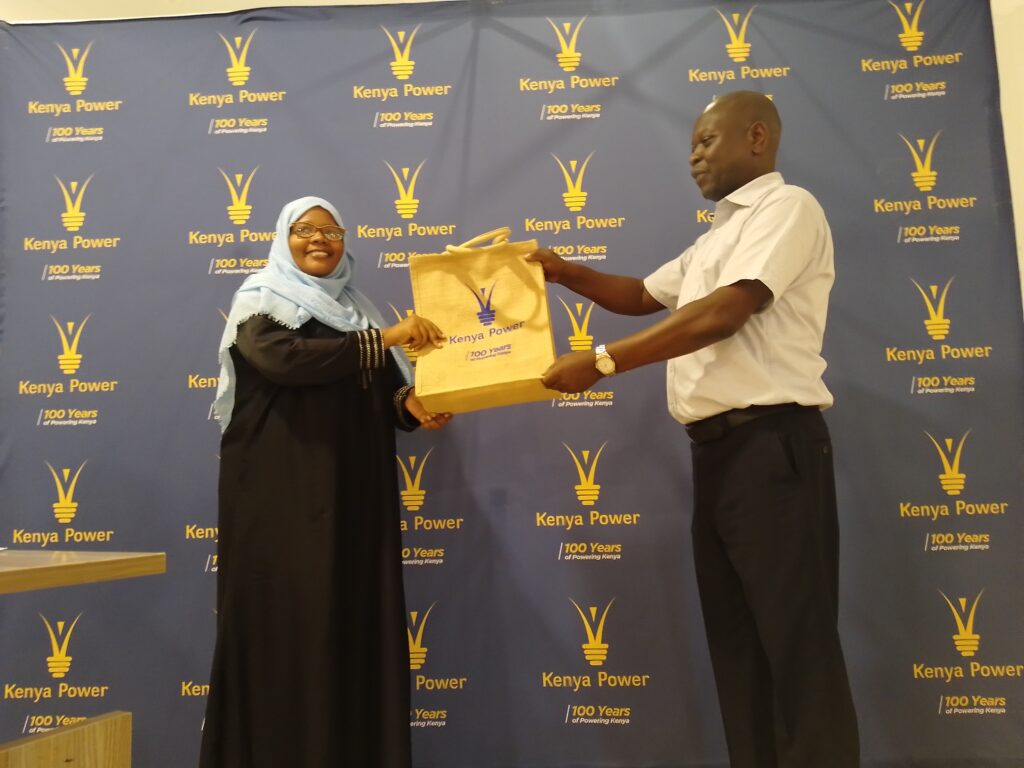By Primrose Omoto
In a move that introduces a new era for Kenya’s energy sector, Kenya Power has introduced two groundbreaking tariffs aimed at revolutionizing how Kenyans consume electricity.
The Time of Use (ToU) tariff and the e-mobility tariff are set to pave the way for a more sustainable and energy efficient future.
The ToU tariff offers a 50% discount for electricity used during off-peak hours between 10 pm and 6 am on weekdays.
Coast Regional Manager Eng. Phineas Marete explained, “The tariff is designed to encourage industries and commercial power users to shift their high-energy consumption to hours when the national grid is less strained. This will help in managing the load on the power grid while allowing businesses to save on energy costs and promote economic growth.”
The e-mobility tariff compliments the ToU tariff as a visionary step towards promoting the adoption of electric vehicles (EVs) in Kenya.
The initiative is expected to boost Kenya Power’s profitability and align it with the 2030 global agenda on climate change and sustainability.
It also part of Kenya Power’s 2023-2028 strategic plan to focus on electric mobility, electric cooking, energy storage, and the electrification of various sectors to support decarbonization efforts.
Commercial and industrial users of electricity in Kwale County stand to benefit significantly from these initiatives due to the lower rates offered during off-peak hours.
While residential consumers benefit from e-cooking appliances said to be just as effective as pressure cookers used in cooking time & energy consuming meals at home.
“I am positive that people will embrace our e-cooking appliances due to the benefits. They are designed to consume less energy and the power consumed will be priced under our e-mobility tariff which comes with lower rates,” he said.
Eng. Marete also explained the difference in token tariffs as observed by Kenyans using pre-pay.
“Electricity tariffs varies amongst consumers due to their demand and consumption patterns. An individual using electricity to light a bulb or charge their phone consumes power differently from one housing a freezer or a laundry machine. This will automatically place them in different tariffs that better fits their earning bracket,” he said.
The tariff is split into three categories: domestic/residential (0-30KWh), commercial (30-100KWh) and industrial (<100KWh). The rates as per the April 2023/2024 financial year is 26.10 and 31.75 Kenya shillings for domestic and commercial users respectively.
Other factors that affect pricing include: cost of generation, transmission and distribution costs and taxes. “Kenya Power only charges energy costs while the rest goes to the Kenya Electricity Transmission Co. (Ketraco) responsible for bulk transmission and respective generation companies.”
In Kenya, the Energy and Petroleum Regulatory Authority is responsible for setting the prices for electricity bills. “These factors are considered when setting the tariffs so as to ensure that the costs of electricity supply is covered while also considering the welfare of our consumers,” Eng. Marete concluded.


